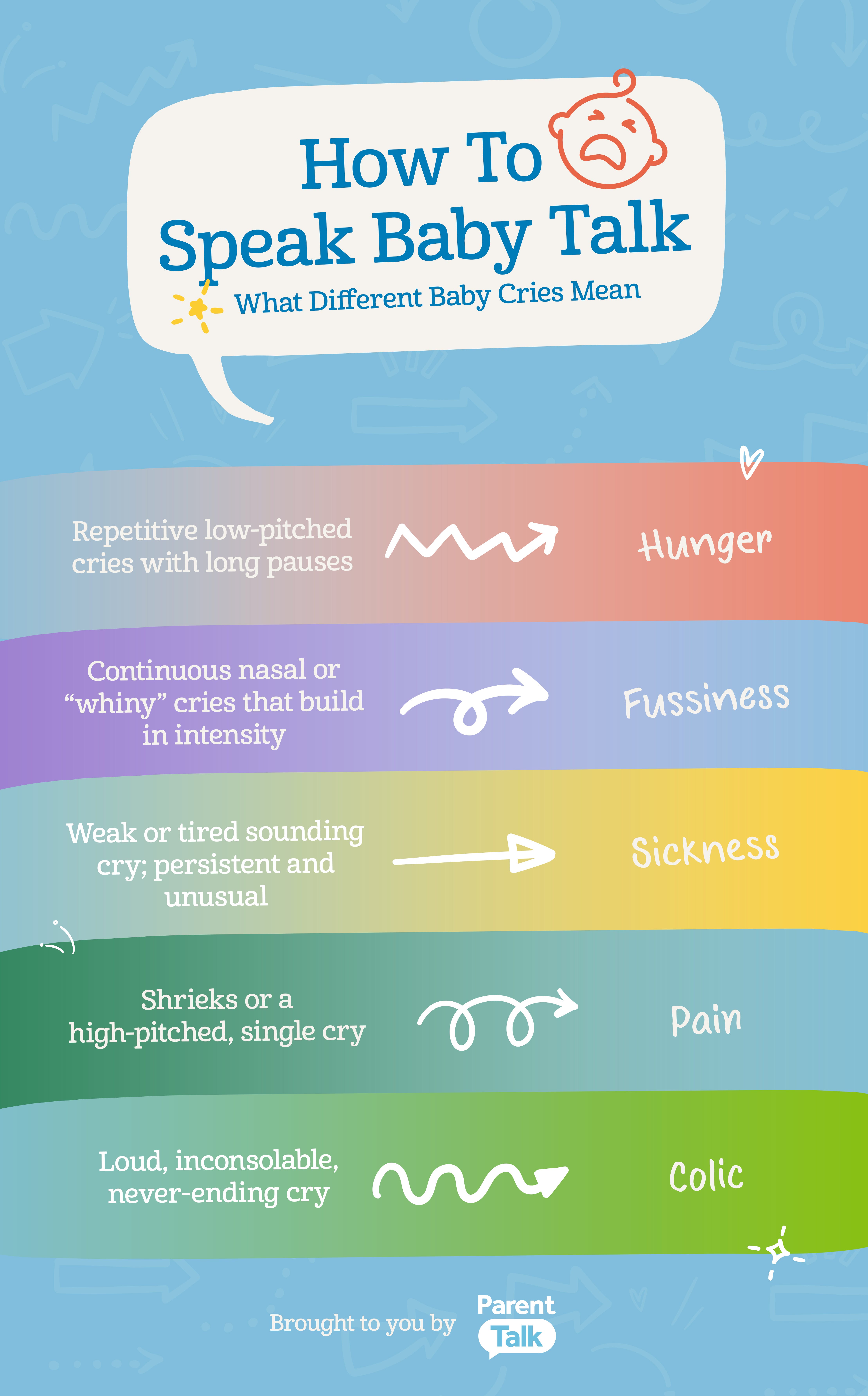What's in This Article
- Your baby cries or is fussy.
- They put their fingers or first in their mouth, or suck on their fingers.
- Your little one opens their mouth wide when touched on his chin or lips and roots for a nipple.
- They squirm or move their arms and legs.
- Your baby moves, licks or smacks his lips or makes small sounds.
Every parent knows the feeling. You’re sitting quietly when suddenly, your baby lets out a piercing cry. Immediately, you’re on high alert. Indeed, studies have shown that a baby’s cries light up the same primitive part of your brain responsible for the fight-or-flight response. You know you need to spring into action—but what to do?
Crying Is Communication
Did you know your baby is communicating with you well before they can talk? It’s true! All crying may sound the same at first, but there are subtle differences that can point to what your little one is trying to say.
Whether you have a newborn or a slightly older baby, most cry due to one of a handful of issues:
- Hunger
- Fussiness or discomfort
- Sickness
- Pain
- Colic
Once you know what to look for, you’re one step closer to fixing the underlying issue and giving yourself—and your babe—a break from the bawling. Here’s what you’ll hear—and what to do about it.
Hunger
- Cry: Long and repetitive, relatively low-pitched cries that include long pauses.
- Pauses will get shorter as baby gets more agitated, so jump to it! Remember, newborns can eat as often as every two hours, and bigger babies eat frequently, too! Look for hunger cues such as rooting for a breast, lip-smacking, and sucking or chewing on fingers.
- What to do: Offer food on demand and practice responsive feeding by honoring your baby’s hunger and fullness cues.
Fussiness
- Cry: Nasal or “whiny” cries, usually continuous and building in intensity if the baby’s needs go unmet. Fussy is a broad category, just like with grown-ups: anything from a stubbed toe to an angry email can bring on the fussiness in adults. Main causes to look for in babies include:
- Tiredness: Look for sleep cues such as yawning, baby’s eyebrows turning red or eye rubbing. Also keep an eye on wake windows.
- What to do: If baby seems tired, try a nap. Remember, newborns can sleep up to 16 or even 18 hours a day!
- Overstimulation: Baby may turn away from a loud or distracting noise or sight. A chaotic environment could be all around them, however, so also monitor noise and activity levels.
- What to do: Try removing baby from the stimulating environment. White noise can help, as can holding the baby close to you.
- Attention: Sometimes, baby just wants a hug! Cries for attention may start off as coos or giggles, then turn into crying if no one (ahem) takes the hint.
- What to do: Give that baby a hug! (You know you want to.) Or try cooing, making eye contact, carrying baby around, rocking in your arms or in a bouncer, or otherwise engaging.
Sickness
- Cry: Often weak or tired sounding. If your baby’s cries are persistent and sound unusual, that could indicate illness.
- What to do: It’s time to contact a medical professional.
Pain
- Cry: Shrieks or a high-pitched, single cry could indicate pain. This is usually directly linked to a cause such as a painful diaper rash, ear infection, or intense gas. It can also be something less common, like an adult hair wrapped around a baby finger or toe (it happens).
- What to do: Look baby over carefully for obvious causes and contact a medical professional if it’s not clear what’s causing the problem.
Colic
- Cry: Loud, inconsolable, never-ending.
- Although perfectly normal, this is the cry that many parents dread. Colic is not a medical diagnosis but is used to refer to babies that follow the 3-3-3 pattern: crying for at least three hours a day, at least three days a week, for at least three weeks. The cries will sound painful and usually begin about the same time each day. This might be accompanied by symptoms such as clenching their fists, arching their backs, or stiffening their limbs.
- What to do: Unfortunately, these cries are typically inconsolable. ☹ The most important thing for parents to do is try to stay calm, give themselves plenty of grace and breaks, and seek professional help as needed.
Conclusion
It can be stressful to hear your baby cry, so try to remember that for them, crying can be a conversation—not a sign of acute distress. If you can stay calm and learn to read your baby’s cues, you can (somewhat) avoid the heart-racing stress baby cries can cause and get to know your little one a little better along the way.








